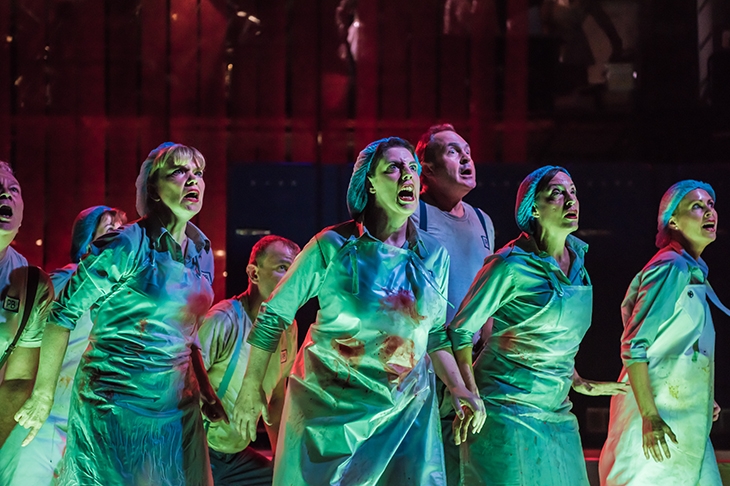‘I feel I have learned lots about what not to write for the theatre…’ There’s a prevailing idea that the ever-precocious Benjamin Britten was an operatic natural — a composer whose gift sprang fully formed with the première of Peter Grimes in 1945. But that’s not strictly true. Go back just a few years to 1941 and you’ll find Paul Bunyan — the oversized skeleton in Britten’s musical closet.
Rewind those few years and Britten, darling of post-war England, was all but a national pariah. A pacifist who had escaped conscription by travelling to America, he was forced to take work wherever he could find it. ‘Simple, marketable works’ was his publisher’s edict, and that’s how Britten and fellow émigré W.H. Auden found themselves collaborating on a ‘high-school operetta’ inspired by America’s trippy original myth of Paul Bunyan — a lumberjack as tall as the Empire State Building with a blue ox called Babe for a best friend — whose leadership helped loggers to clear the way for the American Dream.
The result is a bewildering collision of styles and tones. Britten’s score is a folksy, flannel-wearing, feelgood slab of melody, oozing juicy tunes like a home-made cherry pie, while Auden’s tricksy libretto is all slick metropolitan satire and cynicism. In their hands, a Walt Whitman-style, prelapsarian fantasy becomes complicated, suddenly at war with itself.
Whether this is a war that it’s possible to win (or even one that’s worth fighting) on stage is uncertain. ENO certainly throws all it’s got at the company’s first ever staging of this curiosity. Cramming Coliseum levels of energy, volume and manpower into the period shoebox of Wilton’s Music Hall, it opts for total-annihilation shock and awe. The effect is often deafening, sometimes awkward, and intermittently absolutely thrilling.








Comments
Join the debate for just £1 a month
Be part of the conversation with other Spectator readers by getting your first three months for £3.
UNLOCK ACCESS Just £1 a monthAlready a subscriber? Log in